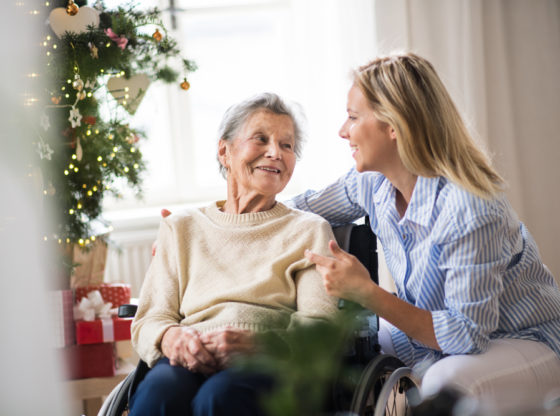If you live alone, it can be difficult to call for medical help if something happens. If you are afraid of falling, suffer from medical conditions, or have difficulties in mobility, the use of a medical alert system is highly beneficial for many seniors. With this being said, which one is the right one for you to choose? The options are endless, the prices are all over the place, and the designs/features vary greatly based upon the subscription you choose. So, before you decide, ask yourself a few questions to narrow down the list.
1) Landline or Mobile Service?
Today, many companies offer home-based over mobile or cell phone services to connect your medical alert system to. By pressing the medical alert button on your device, you are instantly connected to medical dispatch or EMS providers from a landline, or from your mobile phone. Depending on where you are, and the type of device you choose, the way in which you’ll connect will vary. So, consider your home setup, the type of phone service you use, and where you are most likely to need assistance, if something does happen. This will help you make the right decision when choosing a new system for use.
2) Monitored or not?
A system that is monitored will immediately connect you with EMS or medical professionals if you are hurt, fall, or otherwise require medical attention when you push the alert button. A second option, is a system which isn’t monitored. What this does is give you the option to call a friend or a family member instead. If the condition is life threatening or you need immediate attention, you obviously want the monitored system that operates 24/7. If, however, you are healthy, and just need assistance around the home or with tasks when you can’t do them on your own, the non-monitored system might be a better option. It’s a good idea to talk to your family, the monitoring company, and have a plan of action in place, so you get the assistance you need, when you need it, regardless of the type of monitoring you choose to connect with.
3) Fall detection or no?
This is a great feature, but does increase the rate you’ll pay for monitoring and alert systems. These systems detect when you fall so they call you, and ask if you need help. For elderly individuals who live alone, and don’t have someone around 24/7, this is a great feature to have. If, on the other hand, you have family living with you, or in-house aide, you might not need this feature. You can call the person who cares for you to help you if you have fallen. Again, it is a case by case scenario, and you’ll want to consider your in-home care, who’s with you, if you live alone, your ability to get up on your own, and other factors, so you can determine if you need the fall detection feature or not.
4) Additional features?
Many monitoring alert systems have optional features, you can:
- Connect to an app
- Bluetooth and wi fi connectivity
- Connect with video
- Stream calls… and more!
These features are costly, and are going to increase the monthly subscription price you’ll pay to use your medical alert system. So, you’ll have to ask yourself if you need these features, if you want them, and if they are a necessity, based upon the rate you’ll pay. This will help you narrow down the options and tailor the right features for your medical alert system, when you finally do choose a company to go through for your protective monitoring service needs.
Every senior has different needs, or medical conditions they need help with. And, some people have at home aides or medical care, while others don’t. When the time comes to select a medical alert system, and the features which are right for you, these are some of the many variables you’ll weigh to help you decide. Not only to help you find the right alert button, but also to incorporate the features you need, so that you receive the medical support and help you require, the moment you need it in the event of an emergency at home.



